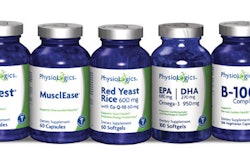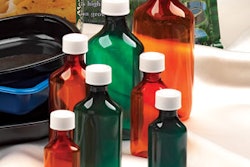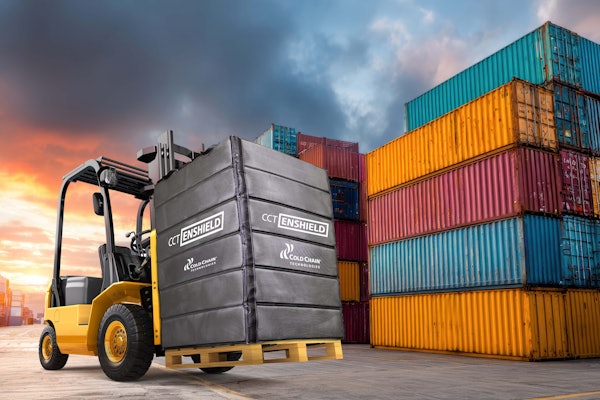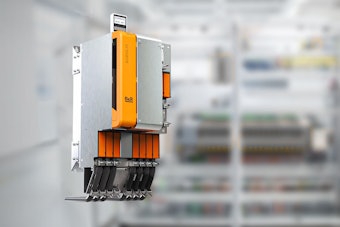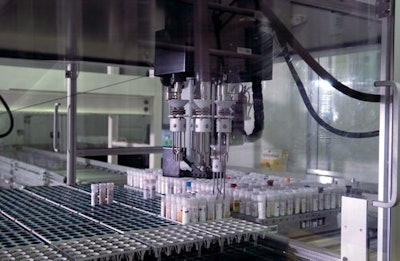
Associated Regional and University Pathologists, Inc. (ARUP Laboratories) is not only one of the largest medical testing laboratories in the U.S. but, it is also one of the most automated. It sports a clinical laboratory freezer that measures 60 x 30 x 26 ft, and operates at -20°C with a two-story automated storage and retrieval system (ASRS) that can hold up to 5,220 stainless-steel storage trays of specimens on indexed shelf locations. The system's capacity exceeds 2.3 million individual specimens.
At the heart of the operation is an automated sorting and transport system consisting of two robotic sorters designed by Motoman. These load and unload finished specimens into storage trays—and continuous-flow “smart” conveyors built by Shuttleworth. These jointly retrieve and transport specimens for clinical testing in less than 2.5 minutes, with a capacity of handling 4,000 specimens/hr.
But it wasn't always this way for ARUP, which for 20 years prior to automating its operations had manually handled specimens. A national clinical and anatomic pathology reference laboratory and a wholly owned enterprise of the University of Utah and its Department of Pathology, ARUP was created in 1984 by the University of Utah School of Medicine's Department of Pathology faculty to support its academic missions of education and research. ARUP supports the Department of Pathology by providing laboratory testing for the University of Utah Hospital and clinics, while engaging in technology needed to establish ARUP as a leading national reference laboratory specializing in esoteric testing. ARUP works to help bridge the gap between academic medicine and business.
“Before automation, ARUP was using walk-in freezers at three different locations to store specimens,” says George Falk, project specialist at ARUP's Central Support Services Group. “The samples were stored manually in [corrugated] trays, with a capacity of about 400,000 specimens. To find a sample, a tech had to go into the walk-in freezer with a box number (an X/Y reference) and search manually. Personnel were required to enter the freezer in pairs for safety reasons, wearing coats, when looking for a specimen, [which was] a labor-intensive and time-consuming process.”
ARUP-designed systems
ARUP developed a software system, ESP (Expert Specimen Processing), to facilitate rules-based automation of its specimen processing. The specimen accessioning process is performed in ESP, as well as automated storage of specimens and complete specimen tracking. The initial computer input of the specimen information is done in the doctor's office and assigned a bar code, which is then logged into the ESP software. Before the sample arrives at ARUP, all of the specimen's data is available as to where it is going and what needs to be done with it. ESP then tracks the specimen with laser scanning of the attached bar code throughout its entire life cycle within the system.
To further optimize sample processing and tracking, ARUP adopted a 5-mL standardized transfer tube that fits into the system's transport carriers and is tracked through ESP throughout the system. ESP and the standardized transfer tubes also facilitate use of an automated thawing and mixing workcell. It thaws and mixes frozen specimens while in the transport system at a rate of more than 1,000/hr, reducing pre-analytical preparation time. It allows specimens in the transfer tubes to be thawed in 30 to 40 minutes instead of the typical five to six hours required to thaw frozen urine samples when in 90-cc bottles.
Critical to the ARUP system's success is its automated transport and sorting system, which includes rapid transport to and from the specimen processing area and high-speed sorting into a large number of different sort groups. From the most remote specimen processing workstation to the farthest sorter (there are two robotic sorters), travel time on the 1,100 linear-ft track is less than eight minutes.
“The continuous flow of specimens to the robotic sorters located near the laboratory area has eliminated considerable walking from the lab to where the specimens are processed,” continues Falk. “Prior to the implementation of ARUP's automated tracking system, a typical specimen was manually sorted at least three times and handled seven to nine different times prior to testing.”
High-speed, high-volume sorting
The two Motoman AutoSorter® sorting robots are attached to the automated tracking system. Optimized for high throughput, these robots automate the transfer of tubes from the automated tracking system into storage trays or racks for entry into the freezer for storage. When a sample needs to be recalled for testing, the AutoSorter receives the storage tray or rack from the freezer and retrieves the designated sample, which is then conveyed out to the requesting lab tech.
Both of these functions had been done manually. Trays are used to store tubes in storage categories of higher volume, and racks are used for lower-volume categories. A reader mounted on each of the robot's six grippers reads bar codes as the tubes are rotated by the robot, eliminating the need to otherwise orient the bar codes. Each sorter can sort up to 2,000 tubes/hr into user-definable targets. The sorter in the refrigerator can sort into 39 target racks. The post-analytic sorters sort into eight user-definable targets for storage.
The AutoSorters are positioned within a large refrigerator (4°C) located at the front of the freezer, which serves as an anteroom to the freezer. When the automated doors to the freezer are opened to allow trays to go in or out, the environmentally controlled humidity of the refrigerator ensures that condensation does not form on the outside of the specimen tubes, which would inhibit reading the labels and bar codes on the sides of the tubes.
AutoSorter utilizes advanced planar drive technology for the movement of tubes and racks/trays within the robot. Gears, belts, and mechanical bearings are replaced with magnetic couplings and air bearings. One of the significant advantages of planar drive is the absence of friction and wear on the robot's four-axis motion components.
A PC-based control system is used to control the AutoSorter, which communicates directly with the ESP to obtain specimen data, improving traceability and eliminating sorting errors. Similarly, sort results are passed back to ESP so full traceability of the specimen is known at all times.
'Smart' conveyors provide precise placement
Specimen trays entering into the refrigerator through the AutoSorter robot cells need to be precisely positioned for the robotic grippers to contact the specimen tubes before releasing to the ASRS in the freezer for archiving. Likewise, specimens exiting the freezer from the ASRS must again be precisely positioned to accommodate the exact placement of the AutoSorter grippers in the refrigerator before releasing to the laboratory. This is accomplished through a specialized system of continuous-motion input and output conveyors designed by Shuttleworth.
The roller conveyors enable integrated devices that allow motion control of the specimen tubes. Product stops, pushers, and clamps used to modify the flow of the tubes are all mounted below the surface. That's critical because of the robotics moving above. If these devices were coming in from the side, such as what would be required on a belt conveyor, a plastic link conveyor, or a tabletop chain conveyor, they would interfere with the robotic arms
The conveyors are also equipped with Slip-Torque technology that minimizes sample damage by creating low back-pressure accumulation. Low line pressure throughout the continuous-motion accumulation conveyors allows for precise product placement with the AutoSorters. The conveyors take product flow from the upstream line for a period of time instead of stopping. A low-pressure accumulation buffer absorbs irregularities in the production flow and provides a smooth, even flow on the line.
Slip-Torque utilizes individually powered rotating roller shafts and loose-fit rollers, which become the conveyor surface, powered by a continuous chain to control the drive force for the samples. The size and weight of the tubes determine the driving force and roller selection. When the samples stop on the surface of the conveyor, the segmented rollers beneath them also stop, generating low back-pressure accumulation, minimizing sample damage.
The conveyor system uses stationary roller shafts covered with loose segmented rollers that allow the same conveyor to be split into three independently operating lanes. For example, the middle lane can accumulate, while the right and left lanes can both convey. Each lane can act independently, but is powered by one motor, reducing energy costs.
The Shuttleworth system conveys and positions a master rack and a series of sample trays, the robotic cell then transfers specimens from the master rack to the various sample trays depending on what tests or diagnostics are to be preformed. The deck of the AutoSorter holds up to 39 racks. Specimen loading and unloading tasks are managed by the continuous-flow conveyors. With an overall retrieval time of less than 2.5 minutes, the requested tubes are typically in a rack waiting for the employee when he or she arrives at the checkout station.
Looking at the lab
“Tracking of the specimen has improved greatly,” explains Falk. “We know immediately where the specimen is. There are labor savings, and time savings, and the system is much more convenient.”
The automated handling system put in place for ARUP Laboratories serves as a showpiece in high-volume, efficient specimen processing. Such automation might only be economical for those labs handling in the range of 15,000 to 20,000 samples. But those labs that do make the switch to an automated facility will not only experience a more efficient operation, but also be in a better position to capture and hold market share into the future.
-By Jim McMahon
Jim McMahon writes on automation technology for public relations firm Zebra Communications .
At the heart of the operation is an automated sorting and transport system consisting of two robotic sorters designed by Motoman. These load and unload finished specimens into storage trays—and continuous-flow “smart” conveyors built by Shuttleworth. These jointly retrieve and transport specimens for clinical testing in less than 2.5 minutes, with a capacity of handling 4,000 specimens/hr.
But it wasn't always this way for ARUP, which for 20 years prior to automating its operations had manually handled specimens. A national clinical and anatomic pathology reference laboratory and a wholly owned enterprise of the University of Utah and its Department of Pathology, ARUP was created in 1984 by the University of Utah School of Medicine's Department of Pathology faculty to support its academic missions of education and research. ARUP supports the Department of Pathology by providing laboratory testing for the University of Utah Hospital and clinics, while engaging in technology needed to establish ARUP as a leading national reference laboratory specializing in esoteric testing. ARUP works to help bridge the gap between academic medicine and business.
“Before automation, ARUP was using walk-in freezers at three different locations to store specimens,” says George Falk, project specialist at ARUP's Central Support Services Group. “The samples were stored manually in [corrugated] trays, with a capacity of about 400,000 specimens. To find a sample, a tech had to go into the walk-in freezer with a box number (an X/Y reference) and search manually. Personnel were required to enter the freezer in pairs for safety reasons, wearing coats, when looking for a specimen, [which was] a labor-intensive and time-consuming process.”
ARUP-designed systems
ARUP developed a software system, ESP (Expert Specimen Processing), to facilitate rules-based automation of its specimen processing. The specimen accessioning process is performed in ESP, as well as automated storage of specimens and complete specimen tracking. The initial computer input of the specimen information is done in the doctor's office and assigned a bar code, which is then logged into the ESP software. Before the sample arrives at ARUP, all of the specimen's data is available as to where it is going and what needs to be done with it. ESP then tracks the specimen with laser scanning of the attached bar code throughout its entire life cycle within the system.
To further optimize sample processing and tracking, ARUP adopted a 5-mL standardized transfer tube that fits into the system's transport carriers and is tracked through ESP throughout the system. ESP and the standardized transfer tubes also facilitate use of an automated thawing and mixing workcell. It thaws and mixes frozen specimens while in the transport system at a rate of more than 1,000/hr, reducing pre-analytical preparation time. It allows specimens in the transfer tubes to be thawed in 30 to 40 minutes instead of the typical five to six hours required to thaw frozen urine samples when in 90-cc bottles.
Critical to the ARUP system's success is its automated transport and sorting system, which includes rapid transport to and from the specimen processing area and high-speed sorting into a large number of different sort groups. From the most remote specimen processing workstation to the farthest sorter (there are two robotic sorters), travel time on the 1,100 linear-ft track is less than eight minutes.
“The continuous flow of specimens to the robotic sorters located near the laboratory area has eliminated considerable walking from the lab to where the specimens are processed,” continues Falk. “Prior to the implementation of ARUP's automated tracking system, a typical specimen was manually sorted at least three times and handled seven to nine different times prior to testing.”
High-speed, high-volume sorting
The two Motoman AutoSorter® sorting robots are attached to the automated tracking system. Optimized for high throughput, these robots automate the transfer of tubes from the automated tracking system into storage trays or racks for entry into the freezer for storage. When a sample needs to be recalled for testing, the AutoSorter receives the storage tray or rack from the freezer and retrieves the designated sample, which is then conveyed out to the requesting lab tech.
Both of these functions had been done manually. Trays are used to store tubes in storage categories of higher volume, and racks are used for lower-volume categories. A reader mounted on each of the robot's six grippers reads bar codes as the tubes are rotated by the robot, eliminating the need to otherwise orient the bar codes. Each sorter can sort up to 2,000 tubes/hr into user-definable targets. The sorter in the refrigerator can sort into 39 target racks. The post-analytic sorters sort into eight user-definable targets for storage.
The AutoSorters are positioned within a large refrigerator (4°C) located at the front of the freezer, which serves as an anteroom to the freezer. When the automated doors to the freezer are opened to allow trays to go in or out, the environmentally controlled humidity of the refrigerator ensures that condensation does not form on the outside of the specimen tubes, which would inhibit reading the labels and bar codes on the sides of the tubes.
AutoSorter utilizes advanced planar drive technology for the movement of tubes and racks/trays within the robot. Gears, belts, and mechanical bearings are replaced with magnetic couplings and air bearings. One of the significant advantages of planar drive is the absence of friction and wear on the robot's four-axis motion components.
A PC-based control system is used to control the AutoSorter, which communicates directly with the ESP to obtain specimen data, improving traceability and eliminating sorting errors. Similarly, sort results are passed back to ESP so full traceability of the specimen is known at all times.
'Smart' conveyors provide precise placement
Specimen trays entering into the refrigerator through the AutoSorter robot cells need to be precisely positioned for the robotic grippers to contact the specimen tubes before releasing to the ASRS in the freezer for archiving. Likewise, specimens exiting the freezer from the ASRS must again be precisely positioned to accommodate the exact placement of the AutoSorter grippers in the refrigerator before releasing to the laboratory. This is accomplished through a specialized system of continuous-motion input and output conveyors designed by Shuttleworth.
The roller conveyors enable integrated devices that allow motion control of the specimen tubes. Product stops, pushers, and clamps used to modify the flow of the tubes are all mounted below the surface. That's critical because of the robotics moving above. If these devices were coming in from the side, such as what would be required on a belt conveyor, a plastic link conveyor, or a tabletop chain conveyor, they would interfere with the robotic arms
The conveyors are also equipped with Slip-Torque technology that minimizes sample damage by creating low back-pressure accumulation. Low line pressure throughout the continuous-motion accumulation conveyors allows for precise product placement with the AutoSorters. The conveyors take product flow from the upstream line for a period of time instead of stopping. A low-pressure accumulation buffer absorbs irregularities in the production flow and provides a smooth, even flow on the line.
Slip-Torque utilizes individually powered rotating roller shafts and loose-fit rollers, which become the conveyor surface, powered by a continuous chain to control the drive force for the samples. The size and weight of the tubes determine the driving force and roller selection. When the samples stop on the surface of the conveyor, the segmented rollers beneath them also stop, generating low back-pressure accumulation, minimizing sample damage.
The conveyor system uses stationary roller shafts covered with loose segmented rollers that allow the same conveyor to be split into three independently operating lanes. For example, the middle lane can accumulate, while the right and left lanes can both convey. Each lane can act independently, but is powered by one motor, reducing energy costs.
The Shuttleworth system conveys and positions a master rack and a series of sample trays, the robotic cell then transfers specimens from the master rack to the various sample trays depending on what tests or diagnostics are to be preformed. The deck of the AutoSorter holds up to 39 racks. Specimen loading and unloading tasks are managed by the continuous-flow conveyors. With an overall retrieval time of less than 2.5 minutes, the requested tubes are typically in a rack waiting for the employee when he or she arrives at the checkout station.
Looking at the lab
“Tracking of the specimen has improved greatly,” explains Falk. “We know immediately where the specimen is. There are labor savings, and time savings, and the system is much more convenient.”
The automated handling system put in place for ARUP Laboratories serves as a showpiece in high-volume, efficient specimen processing. Such automation might only be economical for those labs handling in the range of 15,000 to 20,000 samples. But those labs that do make the switch to an automated facility will not only experience a more efficient operation, but also be in a better position to capture and hold market share into the future.
-By Jim McMahon
Jim McMahon writes on automation technology for public relations firm Zebra Communications .



